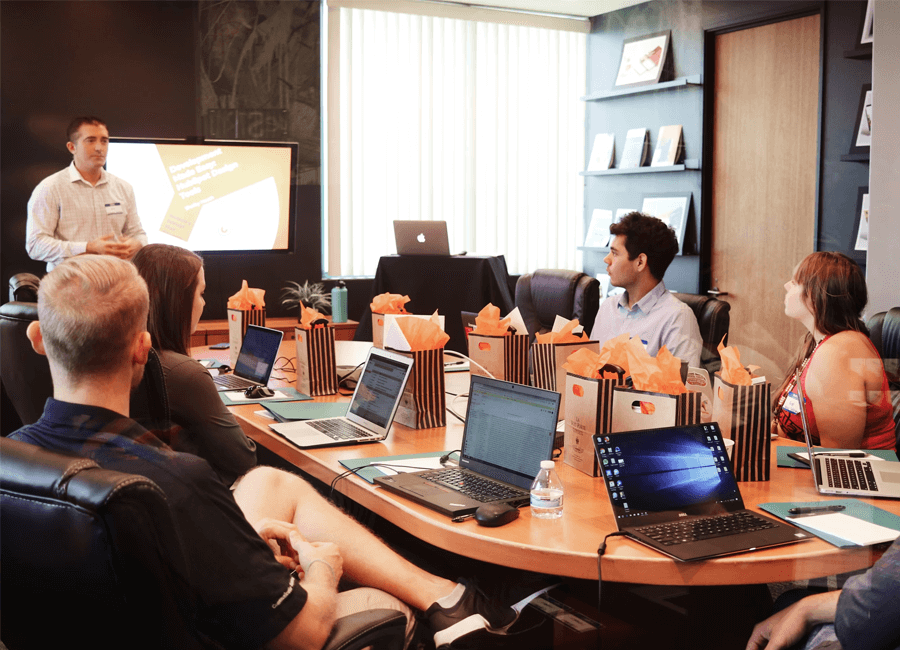Qualitative research comes in many forms. With methodologies spanning from the more traditional focus groups, to the creative forms of smartboards, video diaries and more. But there are some qualitative methods that are entrenched deep into many fields of study including market research, such as qualitative observations and inquiries.
Qualitative research methods enable researcher and stakeholder access to consumer lives so that we can better understand their experiences, motivations, behaviours and actions. Qualitative observations and inquiries are no different, but these two help us focus on different aspects of consumer experiences through different lenses.
Qualitative Observation vs. Inquiry
A qualitative observation is a research method with a focus on equating qualitative differences using the five senses: sight, sound, smell, touch and taste. Essentially, through these five senses that we learn about at a very young age, we can understand participant experiences on a very individualistic and hands-on level.
There are a few characteristics of note associated with qualitative observations, including:
- Qualitative Data – this is an obvious characteristic of a qualitative observation, but it is what distinguishes this research method from a quantitative observation. When conducting qualitative observations, tools such as interviews or focus groups or situational observations (think watching how people interact with brands both in-store and/or online) are employed and gather descriptive, emotive qualitative data.
- Inductive Analysis – reasoning and analysis leading to logical assumptions, assertions, and conclusions. This method is an ongoing process and enables researchers to observe consumer activity and come up with valid hypotheses to test out in the later stages of a research project, or an entirely new research project.
- Natural Inquiry – a qualitative observation taking place in the research participants’ natural environment. Observing how consumers interact with products, services or brand experiences how they would normally experience them is important to understand their true purpose and use. Combined with surveys or exit interviews, these natural inquiries can bridge the gap between consumer intention and action.
- Contextual Understanding – researchers are particularly sensitive to the differing experiences and receptions demonstrated by different demographics and ethnographies. No one participant will respond to a question or situation the same, and so account for them in the resulting data. This can lead to new patterns revealed and new hypotheses created.
While qualitative observations are subjective, focussing on characteristics and qualities noticed by the observer and biased in terms of their importance, there are tricks to help objectify this research methodology that helps insight experts conduct qualitative observations that generate fully actionable insights.
| Tweet This | |
| Qualitative observations and inquiries help insight experts understand different aspects of life, brand and customer experiences through different lenses. |
According to IGI Global, a qualitative inquiry is “a specific research design where in data collection and analysis techniques are combined in order to provide a deep and holistic understanding on why and how things happen rather than to provide a quantitative expression of a certain phenomenon.” This research design finds its roots in psychology and is used to study the experiences of people, seeking to understand their social worlds, the meaning they take from their situation and how they apply that meaning to future experiences.
While qualitative observations are a type of research method, they can be used in a qualitative inquiry provided there is a hypothesis ready to be tested. Qualitative inquiries can make use of observation methods to get a more individualistic understanding of consumer or customer experiences.
Popular Use Cases and Strategies
Qualitative observations and inquiries have lots of uses, some even outside of the insights sphere. Externally to market research, qualitative observations are most notably used in police procedures and investigations.
For example, qualitative inquiries in the policing world could be seen in the form of the procedures that come after the crime has been reported, filled with tasks like witness interviews and crime scene investigations to form the full story of what happened with all of the contextual information and meaning people ascribe to certain actions. Qualitative observations are then seen on crime scenes where officers take note of the sights, sounds, smells, etc. that can provide clues to who committed the crime, how long ago the crime happened and even how it happened (piecing together the story as more clues are collected).
In market research, there are many scenarios would benefit from qualitative observations and inquiries. Brands can conduct qualitative observations to learn a lot about themselves and how customers perceive them; for example, they can learn more about the brand and customer experience, understand how customers use the products and services available on offer, what can be done to improve their public perception and reputation.
Taking the brand experience as an example, with the shift to online shopping brands need to ramp up their in-store experiences if they want to draw customers to shop there too. Scent is a very underutilised sense that can transform an in-store experience. So, using qualitative observations to understand how customers and consumers use their five senses to interact with them in-store will show brands the way to enhancing the enjoyment and engagement in their in-store experience. Bakeries can use freshly baked goods to entice people in at different times of day, with those scents connoting ‘freshness’ and ‘quality’ baked goods, and also transform the sight of their counters or units to make room to display the full range of products (for customer convenience) instead of only certain ones depending on the space they have available.
| Tweet This | |
| Qual observations and inquiries have a variety of use cases, from revolutionising brand experiences to refining vital communications, products and services. |
Department stores can utilise the five senses in a similar but still innovative way, by embodying the vibe of the season. Using fresh and lightly floral scents in spring, more tropical scents in summer, comforting scents in autumn and winter spice scents in winter, to immerse customers in the theme that encapsulates the experience everyone is living through. It has also been proven to help sales if the immersive and interactive experience in-store reflects the products on offer (winter scents and the temperature change from outside to inside for example will spark a renewed interest in winter clothing and comfort items such as fluffier blankets and cushions).
Brands aren't just products and interactive in-store experiences, qualitative observations can show insight experts and stakeholders how to communicate better with their customers, target market, and the wider consumer population. Using the five senses specifically sight, sound and touch to form the language that their target audiences respond to well according to the insights from qualitative inquiries and observations will help brands build up a better rapport with said target audience.
Qualitative observations can be made initially to gather a series of hypotheses, on the brand experience for example, that future qualitative inquiries can prove or disprove; those qualitative inquiries can use qualitative observation techniques to gather further insights on one or two hypotheses gathered from the initial stages.
It’s important to gather insights from qualitative inquiries and observations so that brands can make informed choices when refreshing aspects of their brand and customer experience. Understand which parts of the experience need tuning up, which scents represent the seasons to your customers and target audience specifically, what colour schemes, decoration, products and services, will entice your target audience into interacting with the brand.


















